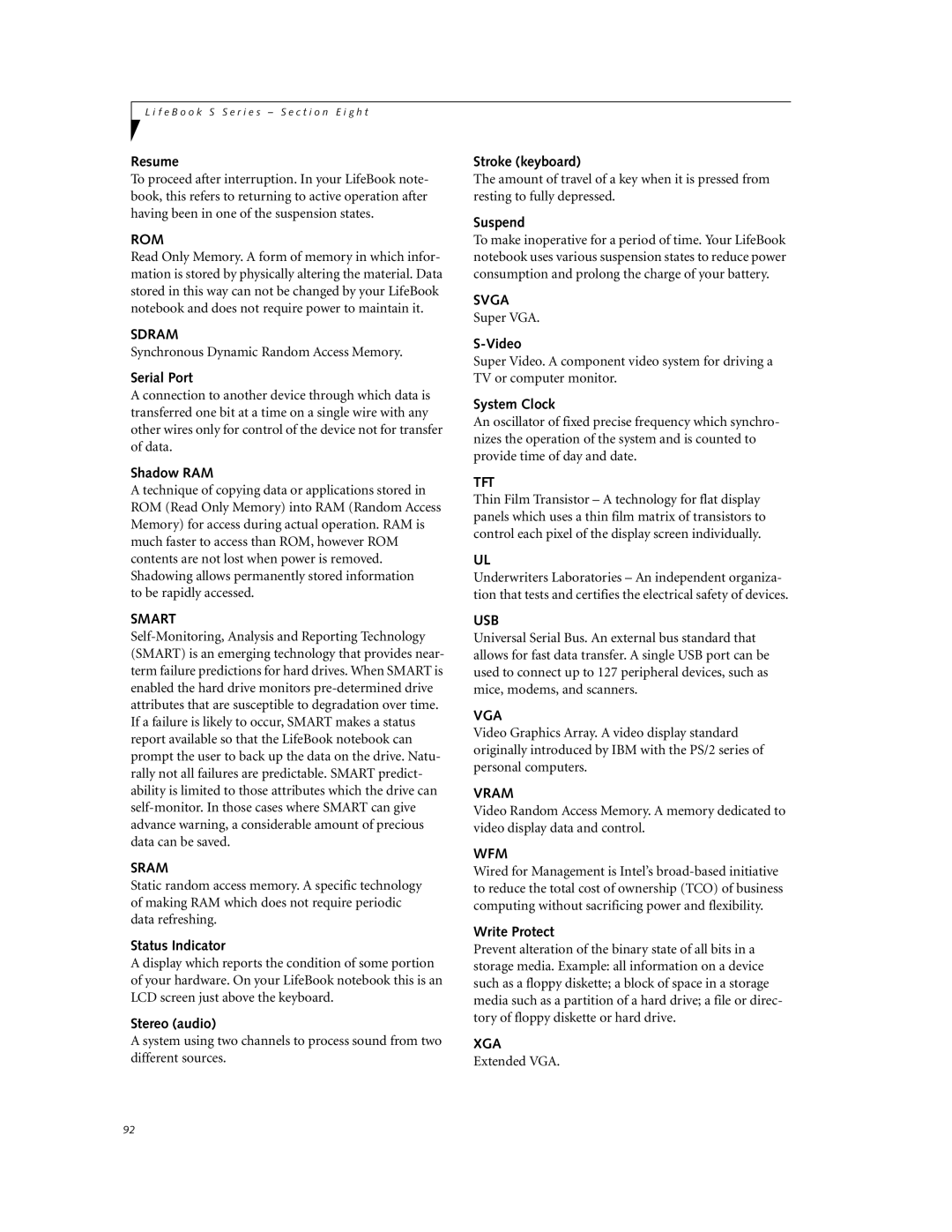L i f e B o o k S S e r i e s – S e c t i o n E i g h t
Resume
To proceed after interruption. In your LifeBook note- book, this refers to returning to active operation after having been in one of the suspension states.
ROM
Read Only Memory. A form of memory in which infor- mation is stored by physically altering the material. Data stored in this way can not be changed by your LifeBook notebook and does not require power to maintain it.
SDRAM
Synchronous Dynamic Random Access Memory.
Serial Port
A connection to another device through which data is transferred one bit at a time on a single wire with any other wires only for control of the device not for transfer of data.
Shadow RAM
A technique of copying data or applications stored in ROM (Read Only Memory) into RAM (Random Access Memory) for access during actual operation. RAM is much faster to access than ROM, however ROM contents are not lost when power is removed. Shadowing allows permanently stored information
to be rapidly accessed.
SMART
SRAM
Static random access memory. A specific technology of making RAM which does not require periodic data refreshing.
Status Indicator
A display which reports the condition of some portion of your hardware. On your LifeBook notebook this is an LCD screen just above the keyboard.
Stereo (audio)
A system using two channels to process sound from two different sources.
Stroke (keyboard)
The amount of travel of a key when it is pressed from resting to fully depressed.
Suspend
To make inoperative for a period of time. Your LifeBook notebook uses various suspension states to reduce power consumption and prolong the charge of your battery.
SVGA
Super VGA.
Super Video. A component video system for driving a TV or computer monitor.
System Clock
An oscillator of fixed precise frequency which synchro- nizes the operation of the system and is counted to provide time of day and date.
TFT
Thin Film Transistor – A technology for flat display panels which uses a thin film matrix of transistors to control each pixel of the display screen individually.
UL
Underwriters Laboratories – An independent organiza- tion that tests and certifies the electrical safety of devices.
USB
Universal Serial Bus. An external bus standard that allows for fast data transfer. A single USB port can be used to connect up to 127 peripheral devices, such as mice, modems, and scanners.
VGA
Video Graphics Array. A video display standard originally introduced by IBM with the PS/2 series of personal computers.
VRAM
Video Random Access Memory. A memory dedicated to video display data and control.
WFM
Wired for Management is Intel’s
Write Protect
Prevent alteration of the binary state of all bits in a storage media. Example: all information on a device such as a floppy diskette; a block of space in a storage media such as a partition of a hard drive; a file or direc- tory of floppy diskette or hard drive.
XGA
Extended VGA.
92
